Absolut Lakra and the alternative culture in a consumers world
Lacra: 1.- Annoying person. Parasite. Disastrous. 2.- A person who inflicts damage to society. 3.- Has no trade and creates no benefit.
Jerónimo López Ramírez (alias Dr. Lakra) is an illustrator, tattoo and plastic contemporary artists. His work came to me when I acquired the book Dos Amigos (Two Friends) by Abraham Cruzvillegas and Dr. Lakra that was published by MACO (Oaxaca Contemporary Museum of Art) in 2005. The book is a reference to the exposition both artists has in that museum. I have seen the work of many m ore contemporary artists in the world like Zhang Huan, Doug Aitken, Greyson Perry, Christian Schumann and the well known Basquiat, to name a few. Much of the so called contemporary art gives me the sensation of returning to something, like going back to past experiences, a turning point to reliving certain sensations. They could be from early childhood, personal life, the house you lived in, that is, of all those intimate memories located in apparently little and insignificant things that endure or simply, a feeling that is brought to the present with a new meaning. At this point it is important to say that I recognize in Dr. Lakra a certain mexican background that I recognize as an important cultural identification feeling.
It is said that Dr. Lakra is, among other things, a tattoo artist, but even in this controversial art, sometimes rejected by conservative social values, Dr. Lakra goes a step further. His clients are often old dolls that have found a way to survive through time (maybe with the loss of hair, time marks on face and body of other affections). Other tattoo clients he finds in old pinup girl from 1960’s and 1970’s calendars where the lush-look semi nude girls where exhibited in small mechanical or butchery shops. He tattoos their whole body with pen or nib and on doing so he modifies them completely, he (as it is said about his work) “intervenes” them. They sometimes look like a bathroom graffiti: mordant, crude, witty, made by a non public mind but yet contemporary, ingenious and alive. Among the pinup girls one may find renowned girls like Lin May with her breasts exposed and Dr. Lakra’s “intervention” all over her not making her necessarily more beautiful but truly more contemporary and full of symbolism. Lakra’s “intervention” brings this characters to a present time.
He’s had various collective expositions in different parts of the world, so, we are not going to judge his artistic value. Recently he had his first individual exposition in New York. His expositions in galeries and museums are becoming renown for the presence of illustrations and paintings on walls and ceilings, ephemeral work prepared exclusively for the exposition. And the chinese, maori, mexican and manga japanese influence, as well as the american comic culture could be seen all the time in his work as part of the influences he adressess. But they do not emerge in a direct fashion, Lakra is like a filter that allows this influences to pass through only with his personal point of view.
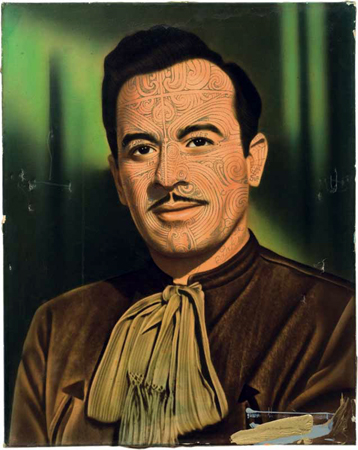
Pedro Infante (18 November 1917-15 April 1957) was one of the most famous actors and singers in Mexican popular culture. Here “intervened” by Dr. Lakra with a maori style tattoo design.
Maybe what is somewhat disturbing is the fact that we place Dr. Lakra in the same space with the likes of David LaChapelle and Karl Lagerfeld, two contemporary artists that have combined contemporary art, fashion and design. And that is because Dr. Lakra has designed the Tequila Cuervo Reserva de la Familia (Cuervo’s Family Reserve tequila) package. This tequila is Cuervo’s most refined tequila on the market. Also, he has created the image for a Mexican version of Absolut Vodka called Absolut Lakra.
This is something interesting from a cultural analysis of contemporary society point of view. As we have mentioned in other posts, the mainstream culture is strongly oriented towards the consumption of massive well established and accepted cultural elements, specially those of ideological innocuousness. Most of the cultural nourishment consumed in this massive sector of society is, by definition, a cliché. Whoever, mainstream culture is feed from two opposite poles that occasionally emerge in a more direct form into societies every day life. On one hand we find the conservative and moral position that aims to impose cultural forms of control for society. In terms of alcoholic beverages, as it is part of our present theme, the conservative cultural position would orient this products towards grown up people, with a moderate consumption in special occasions and would probably point out the concept of a refined brand.
The other pole would be represented by the alternative and propositive position motivated to break the social patterns from the conservative perspective to the social clichés of the mainstream massive segment. The works of people like LaChapelle and Dr. Lakra are an example of this because their work shows their life views and ideological authentic vision of contemporary society.
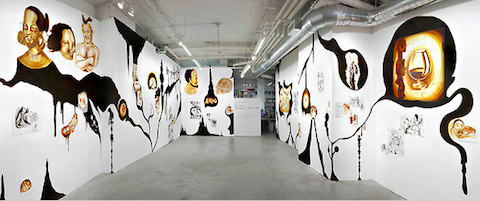
A Dr. Lakra exposition where one can see the way he prepares or “intervenes” the place for a complete projection of his work.
So, lets do a 180º turn and take a look at the companies that promote their products or build up brand image with the help of such contemporary artists who’s work proposal is openly alternative. This kind of company is growing in number every day. Companies around the world may also be segmented in the cultural three-segment scheme we proposed, that s, as conservative, mainstream or alternative. Most companies may be found in the mainstream segment where the copy of cultural elements in search for proved benefit patterns is very common. This companies believe in the search of novelty image to construct or reconstruct their reality, or may we say hyperreality as Baudrillard would point out. However, the process of making the copy, in most of the times, ends up with a profound loss of the original, that is why the copy provides a cliché concept at the end. For example: consumer society has taken in some principles of the look and intensity of rock culture but has left aside its ideals and antagonistic postures of the 70s.
The presence of contemporary artists in the life of commercial brands of the mainstream world is then, an interesting phenomena. With a critical view of society (LaChapelle often makes contrasting comparisons between opulence and glamour and extreem poverty and need, he also compares Jesus to a pop star) contemporary art does not seem like the right choice for the commercial world. But it is there! In Mexico we have seen in recent years some example of this in the sprites market: LaChapelle created the image for a special edition of Cerveza XX (Two X brand bear) of the company Cuauhtémoc Moctezuma. LaChapelle has worked for other brands like Remí Martin and Swatch in the past. The tequila company José Cuervo invited several contemporary artists from around the world to create a collection of designs for the Tequila 1800 (white version tequila). Even though this two examples may seem to follow a similar image strategy pattern, things are not always the same.
The difference between the to approaches may only be evident through the identification of the companies cultural identity. This is essential to determine the process each company employs to incorporate the cultural elements at play. Assuming that the goal is to relate the contemporary image of the artist with the brand, and in doing so, create an association of the brand with a consumer segment that may value such cultural concept, even if the consumer does not have knowledge of the artist, but identifies and values the vanguard message provided, we may determine that this process of incorporation of alternative cultural element may go thorough three possible paths:
- Alternative culture finds its way into mainstream culture when accessing an open minded company that is willing to accept its influence. This is part of the process by which mainstream culture gives small steps towards an open mind culture.
- The alternative culture is copied by a company-brand with the expectancy of constructing a new imagen and positioning in the market. This scheme of a fax like copy delivers us a rough version of the original that usually lacks the authenticity cultural elements of the original.
- The company or brand has culturally trained personell that understands the cultural values of contemporary and alternative art expressions and looks to relate them with his brand in a way that it works for both of them in a balanced way.
The experience of José Cuervo and Absolut are an example of the third option that is, they represent a company cultural identity that coexists with the vanguard positions of contemporary art. They are companies that have been working with contemporary culture for some time and it is not an opportunistic aspect or gadget for trying to look hip or contemporary for a while and then going back to a more common image strategy.
The situation with Cuautémoc Moctezuma is different. We do not know of any past affinity of the company to alternative culture. The LaChapelle image created for Cerveza XX had little exposure un mass media and after this, the brand has not shown more efforts like this. Because of this, I think this is a good example of the second option described above, where a company looks to take advantage of contemporary arts characteristics but without it’s cultural foundation.
Absolut Lakra may be seen all over, in public fences, street adds, magazines as well as in-store publicity. The image exposition looks to show the complete work of Dr. Lakra, the symbolism and it’s intention. The design is based in the Mayan iconography which allows a good “precolombian” (before the spanish conquest) identification of Mexican root culture, which is, in addition, something attractive for turists. Some may consider the Absolut image too light coming from Dr. Lakra. I do not know if there were any conditioning from the brand to the author, but one may see that both parts are being benefited from the collaboration. May people will enjoy the new Absolut image while others will be interested in learning more about Dr. Lakra. In the mid term, a cultural influence will develop, at least in certain sectors of the population, and the work of artists like Dr. Lakra will be better assimilated. His tattoos, objects, “interventions” and spirits will become less strange, so, accordingly, the ideas we have regarding what is beautiful, good taste and what is vulgar may suffer a change in perception, at least a little…
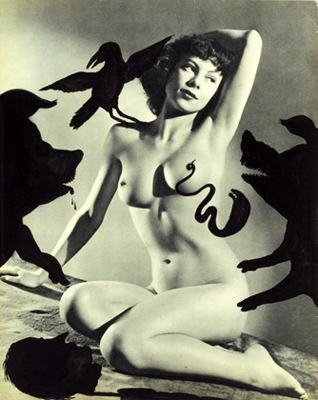
Today Dr. Lakra works on traditional mexican pinup girl images and the presence of “animas” or spirits.
Information, images and interesting sites on this topic…
http://www.culturacolectiva.com/DR-LAKRA-interviene-el-Museo-de-Arte-Contemporaneo-de-Oaxaca
http://hablemosdetequila.com/site/2012/02/dr-lakra-2/
Absolut Lakra http://www.disenofilia.com/absolut-mexico-por-dr-lakra/
http://masaryk.tv/59766/dr-lakra-interviene-reserva-de-familia.html
http://www.designaholic.mx/2011/04/dr-lakra-su-arte-del-tatuaje-se-exhibe.html

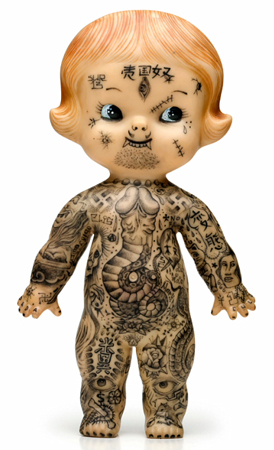
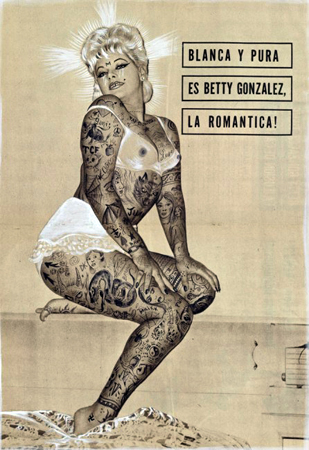
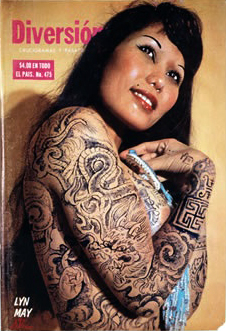

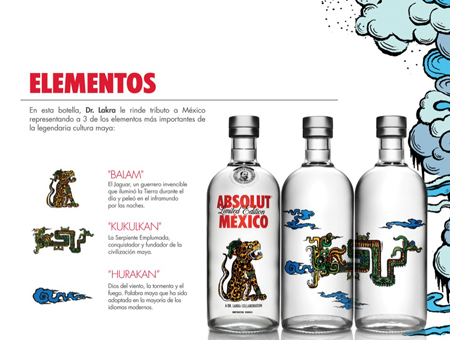


No trackbacks yet.